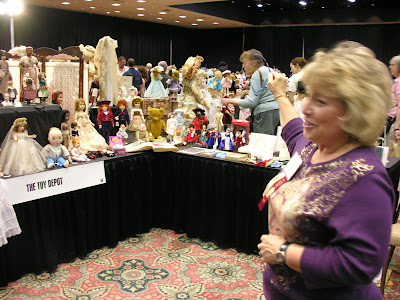Thursday, 9 August 2012
Dolls To Fund The Liberator - United Federation of Doll Clubs Convention
Cloth dolls in the image of African-Americans were the focus of attention for more than 1,000 enthusiasts at this year's convention of the UFDC in New Orleans. The earliest black doll displayed was sewn about 1850. Because cloth is fragile, most surviving black cloth dolls date from about 1870 — during Reconstruction. However, records indicate hundreds were sold at bazaars before the Civil War to raise money for the abolitionist newspaper, The Liberator, according to textile historian Roben Campbell. She says that the first sold for The Liberator in the early 1840s were made by an African-American woman who taught sewing to young black children in Salem, MA, where black and white women worked together in a women's anti-slavery society. As children, the author Louisa May Alcott and her sisters owned such a doll, most likely bought by their fervently abolitionist father, Bronson Alcott.
The story is that topsy-turvy dolls like the one above were made by black women working for white families, and which head was shown would depend on the race of any adults in the room, said Stamps, who is African-American. Campbell said that when she began work on the exhibit in 2005, she had to dig deep for information about black cloth dolls. Black cloth dolls from the 1870s to 1890s can bring from hundreds to thousands of dollars. Informative quilts, banners and five dolls shown in New Orleans came from the National Black Doll Museum, privately run by Debra Britt and her two sisters in Mansfield, Mass. (The Museum is on Facebook - click here to visit) The museum — one of two devoted to black dolls — owns about 5,000 and has 2,000 on display. The oldest dolls in her museum, Debra says, have no features at all and aren't easily recognized as dolls. They are wrap dolls handed down in her family and made by enslaved children, possibly in the early 18th century. Debra says They were made of gourds and vines, and wrapped with cloth and twigs. The children would fill those dolls with stones to carry the fear that they had and they would hide this doll from the master. Do visit the UFDC web site - if only for the free download of a lovely paper doll pattern.
Subscribe to:
Post Comments (Atom)





No comments:
Post a Comment